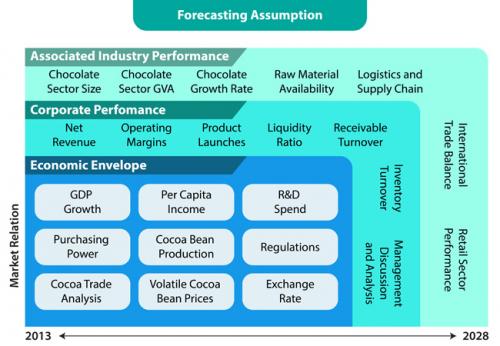Stakeholders Vie on Digital Solutions to Augment Cocoa Agricultural Production

Amongst the potent rising commodities, cocoa is soaring to new heights. While chocolates are a sweet treat for consumers, producers face daunting challenges. According to the World Cocoa Foundation, over 5 million family farmers in countries such as Brazil, Indonesia, Cameron and Cote d’Ivoire produce over four and a half million tons of cocoa beans. Chocolate manufacturers, financial institutions, farm-level input providers, and development organizations are vying to create a digital solutions to augment agricultural productivity, enhance access to finance for a sustainable and climate smart cocoa supply chain.
Digital Evolution in Cocoa: Traceability goes paperless
When cocoa is traceable physically, companies have little idea about which farmers contributed to a truckload of coca shipped to their factory. Given the digital evolution in cocoa, cocoa can be mapped down to the GPS coordinates of the farm. In addition, digital dashboards empower buyers to know if a farm is within a protected forest or is contributing to the loss of forest cover by comparing GPS coordinates of farm with a satellite data showing modification in the leaf coverage.
The cloud based systems maintain a record of every cocoa transaction. To bring a paradigm shift in the industry, software companies are piloting bar codes that can be stitched or stapled onto jute bags unique to each individual farmer.
Cocoa Gains Traction in Food and Beverage Industry
Growing consumption of chocolates reveal the rising appetite for cocoa, thereby making cocoa one of the most widely consumed flavors in the food and beverage industry. Cocoa barons are profoundly using fine or flavored cocoa in traditional recipes and different food products to expand its consumer base. On the other hand, rising demand for cocoa liquor is projected to augur well for the cocoa barons.
Underpinned by Huge Popularity Cocoa Production leap frogs
To spark the industry into further popularity, chocolates’ retail shelves are observing the presence of a variety of chocolates ranging from dark chocolates, milk chocolates to drinking chocolates. Cocoa, a food item previously termed as a luxury item, has now become an affordable item which could be attributed to growing discretionary income.
Manufacturers focus more on Gluten-free and Organic Consumer Trends
There has been considerable transition in the way food products are purchased as consumers shift towards organic and gluten-free food products. With the view to expand its customer base, manufacturers are relying upon healthier and innovative cocoa products along with constraint in sugar content. At the time when consumers are shunning chocolate consumption, manufacturers have glanced their focus on gluten-free and organic products.
Cocoa Farmers Reap Benefit from Satellite Technology Project
In order to enhance the productivity and sustainability, Ghana came up with an initiative—SAT 4farming, designed to use satellite imagery and digital technology to create individual Farm Development Plans (FDPs) that is expected to guide farmers over a seven-year duration. The FDPs offer a planning and monitoring tool ranging from suggestion on climate-adaptation, farm practices and investments to certification training. Moreover, the relentless monitoring offer farmers, along with women and youth, field agents with unparalleled data-based guidance aimed at a viable and sustainable future.
The governments of Ghana and Cote d’Ivoire put onus on higher farm productivity ushered by cocoa and chocolate industry for the oversupply of cocoa. Lessening risks of structural overproduction of cocoa to assure that prices don’t plunge is imperative. Faltering agricultural production conditions in various regions are underlying problems manufacturers lament. Having said that, major initiatives taken by stakeholders appear as a bright prospect for the cocoa market.
The integration of satellite imagery in Ghana is estimated to organize the process of creating farm development plans, empower monitoring and offer invaluable insights on environmental conditions.
The cocoa and chocolate industry has begun to integrate crop diversification into their promising programs to underpin farmers. However, such efforts lack strategic and macroeconomic approach. Steps such as incorporating farmers’ crop diversification, assessing macroeconomic impact, evaluating opportunities with the assistance of evidence-based policy and governments of the major cocoa producing countries should come up with county-specific development strategies.
More Research for Sustainable Development Strategy
The industry for cocoa demand more robust research on development strategies, the progress of a flourishing network of small and medium-sized enterprise (SMEs) and agro-processing.
In the midst of growing popularity of cocoa ingredients in food and beverage products, the manufacturers are vying for additional investments to keep up with a sustainable growth. Meanwhile, increasing prices of cocoa have further piled up economic unpredictability in the international cocoa sector.
The emergence of new players with promising strategies has had the impact on the global cocoa industry. A market such as cocoa is prone to disturbance as the functioning of the market needs an interplay of consumers and producers, of shippers and warehouses, of speculators and commercials, of risk takers and risk avoiders of long term participants and short-term players.
Post Your Ad Here
Comments